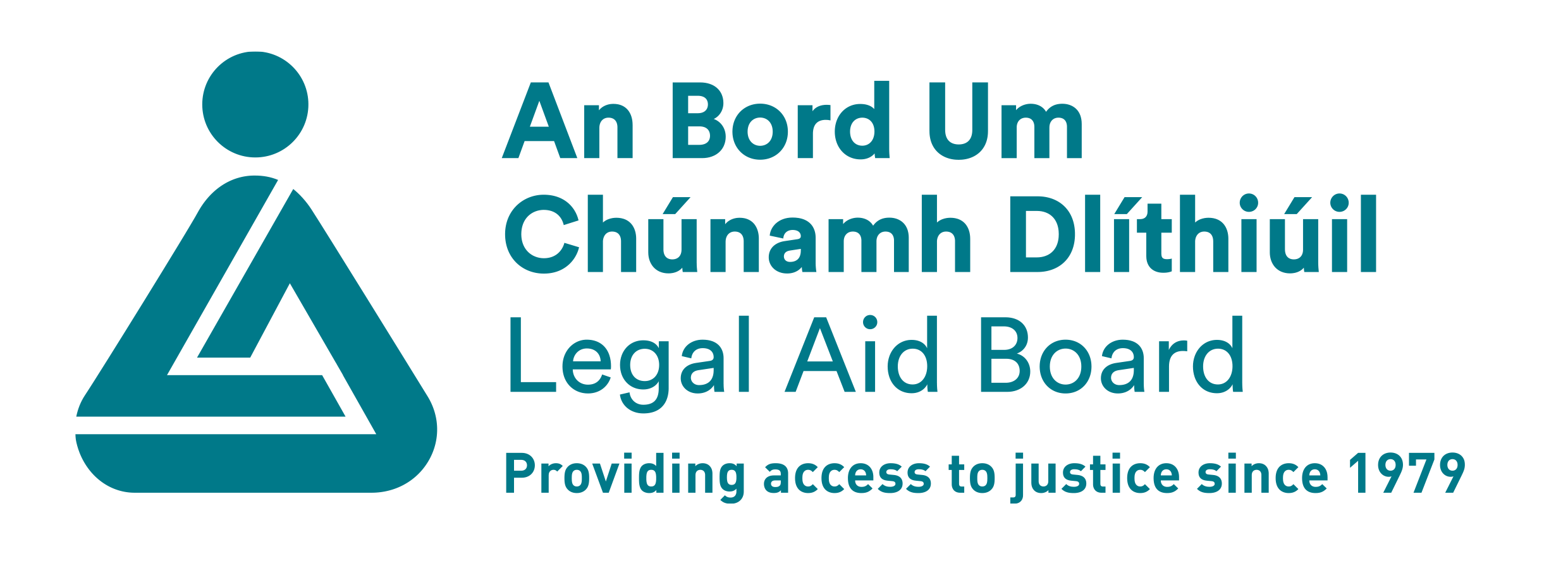
Studies and Surveys
Overview
The Legal Aid Board conducts various studies and surveys to inform its policy decisions and improve its services, particularly in areas like client experience, legal aid access, and service delivery. They engage with higher education institutions, academics, and other stakeholders to explore research proposals and collaborate on projects. The LAB also publishes statistics and press releases related to its work, including waiting times for first consultations at law centres.
Key areas of focus for the The Legal Aid Board's research and surveys:
-
Client experience: The Legal Aid Board actively seeks to understand the experiences of clients accessing legal aid services, including satisfaction with the services provided and access to justice.
-
Legal aid access: Research helps the Legal Aid Board identify barriers to accessing legal aid and inform strategies to improve access for those in need, including those with limited means.
-
Service delivery: The Legal Aid Board uses research to evaluate the effectiveness of its services and identify areas for improvement, such as streamlining processes and enhancing the quality of legal advice and representation.
-
Specific legal aid schemes: The Legal Aid Board may conduct studies related to specific legal aid schemes, such as those for criminal legal aid or international protection.
-
Waiting times: The Legal Aid Board publishes data on waiting times for first consultations at law centres to track access to legal services and identify areas where improvements are needed.
How the Legal Aid Board uses research and surveys:
-
Evidence-based policy decisions: The Legal Aid Board uses research findings to inform policy decisions and ensure that its services are evidence-based and effective.
-
Service improvement: Research helps the Legal Aid Board identify areas for service improvement and develop strategies to enhance the quality and accessibility of legal aid services.
-
Stakeholder engagement: The Legal Aid Board engages with stakeholders, including academics and other relevant bodies, to collaborate on research projects and share findings.
-
Transparency and accountability: The Legal Aid Board publishes data and statistics related to its work, including annual reports and press releases, to promote transparency and accountability.
Examples of Legal Aid Board research and surveys:
-
Client satisfaction surveys: The Legal Aid Board may conduct surveys to assess client satisfaction with the services they have received.
-
Waiting time data: The Legal Aid Board publishes data on waiting times for first consultations at law centres to monitor access to legal services.
-
Studies on specific legal aid schemes: The Legal Aid Board may conduct studies on specific legal aid schemes, such as those for criminal legal aid or international protection.
-
Collaborative research projects: The Legal Aid Board collaborates with higher education institutions and other stakeholders on research projects related to legal aid.

